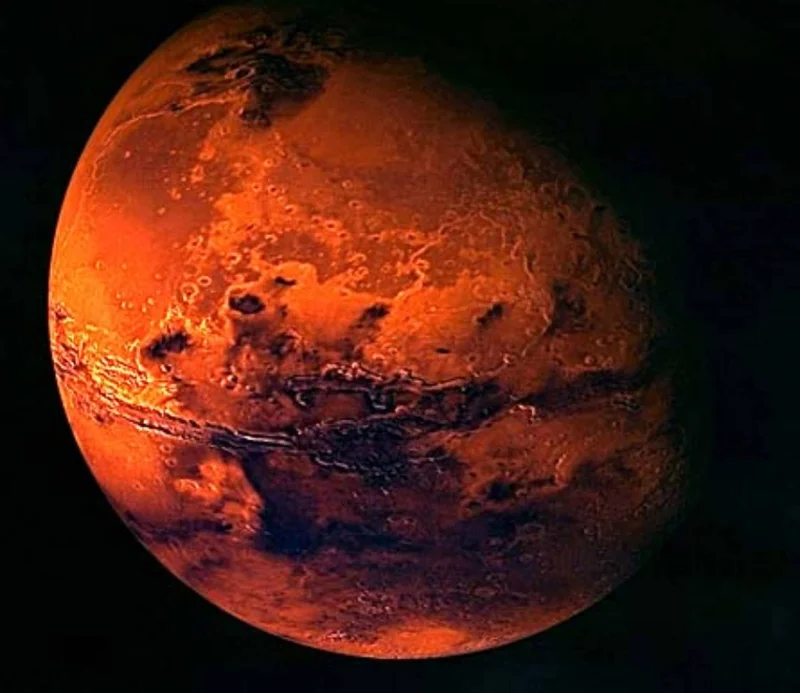Mars Mission in Peril: Is NASA About to Abandon the Search for Life?
The Red Planet's Red Flags
NASA's Mars Sample Return (MSR) mission is facing a potential shutdown, and the implications for the search for life beyond Earth are significant. The Perseverance rover, currently trundling across the Martian surface, has already collected samples from Jezero Crater, a location believed to have once been a habitable lake. These samples, including a core from a rock formation called Cheyava Falls, are now at risk of being left on Mars indefinitely. The reason? Runaway costs and a program deemed "financially unstable" by the Trump administration.
The original MSR plan, involving a European Space Agency fetch rover and a complex series of launches and orbital dockings, was projected to cost $6 billion. An independent review, however, warned that the final bill could balloon to $11 billion and push the mission's completion back to 2040 – a decade behind schedule. This prompted NASA administrator Bill Nelson (before he stepped down in January 2025) to "pull the plug" and seek alternative, cheaper approaches.
The problem, as I see it, isn't just the cost overrun, it's the opportunity cost. Every dollar spent on MSR is a dollar not spent on other planetary science endeavors. Paul Byrne, a planetary scientist at Washington University in St. Louis, voiced this concern, fearing that MSR could "eat all the money for other missions." This raises a critical question: Is the potential scientific payoff of MSR worth sacrificing other research avenues? And perhaps more fundamentally, is NASA's organizational structure capable of managing projects of this scale efficiently?
A Rock and a Hard Place (On Mars)
Perseverance has been busy. It's collected dozens of rock samples, strategically caching some at a location called Three Forks as a backup. But the most promising samples, including the Cheyava Falls core with its potential biosignatures, remain onboard. Scientists are particularly excited about the Bright Angel samples, where Perseverance detected organic matter. Kenneth Farley, Perseverance’s project scientist, calls Cheyava Falls "the most interesting sample in our entire collection."
Here on Earth, these samples could be subjected to a battery of tests to look for telltale signs of past life – decayed microbes, imbalances in carbon isotopes (specifically, carbon-12 and carbon-13 ratios), and microfossils. The discovery of extraterrestrial life would be paradigm-shifting, proving that Earth isn't unique in the universe. It could also provide insights into why Mars lost its magnetic field and atmosphere, knowledge that could inform our understanding of habitable worlds beyond our solar system.
But let's be realistic. The odds of finding definitive proof of life are, statistically speaking, still low. We're talking about searching for microscopic evidence in rocks billions of years old. It’s a high-risk, high-reward gamble, and the question is whether the potential payout justifies the investment. And this is the part of the report that I find genuinely puzzling: why wasn’t a detailed cost-benefit analysis conducted before launching Perseverance? We're talking about billions of dollars, not a few spare coins in the couch.

Commercial Solutions and Chinese Competition
NASA put out a call for commercial proposals to complete MSR, receiving submissions from SpaceX, Blue Origin, and Rocket Lab. Rocket Lab CEO Peter Beck claims his company could do the mission for $4 billion with a return in 2031 – a significant cost reduction. However, the details of SpaceX's and Blue Origin's proposals remain shrouded in secrecy. (Neither company responded to requests for comment, which is never a good sign.)
The delay in selecting a commercial partner, due to the change in presidential administrations (from Biden to Trump), has opened the door for China. China aims to launch its Tianwen-3 mission in 2028 and bring samples to Earth by 2031. Now, the numbers get interesting. While NASA's MSR plan is complex and costly, China's approach is simpler, focusing on collecting samples from a single location. This raises the question: Is a simpler, faster, and cheaper mission a better strategy, even if it yields less diverse samples?
Perseverance has enough power to keep operating for another decade, buying some time. But if a retrieval mission isn't launched within the next two years, the rover may have to drop its samples on the Martian surface and hope for a future pickup – perhaps by a human expedition or, more likely, by the Chinese. Jim Green, former NASA chief scientist, even suggested that China might simply grab the samples, given that they aren't marked "Property of the United States." According to a recent report, NASA’s Mars Sample Return Mission is in Jeopardy as U.S. Considers Abandoning Retrieval.
Are We Really Serious About This?
The fate of MSR now rests with Congress, which must decide whether to fund the mission or scrap it in favor of other priorities, like sending humans to Mars. But before Congress makes that decision, they need to ask some hard questions.
First, is NASA capable of managing large-scale projects efficiently, or are cost overruns and delays inevitable? Second, is the potential scientific payoff of MSR worth the financial risk and the opportunity cost of sacrificing other research avenues? And third, are we willing to cede the search for extraterrestrial life to China?
These aren't just scientific questions; they're strategic and economic ones. And the answers will determine whether we continue to explore the Red Planet, or whether we leave those precious samples to gather Martian dust.
